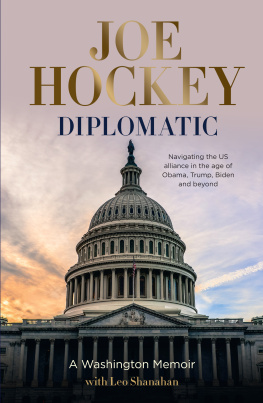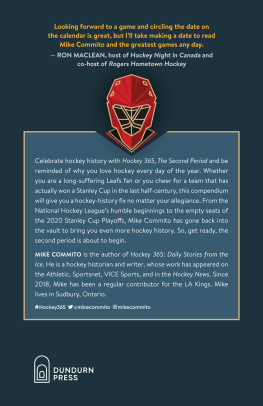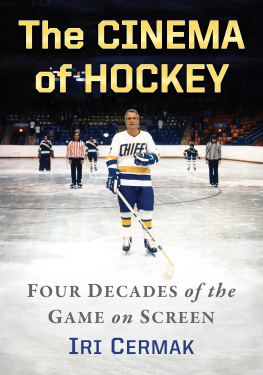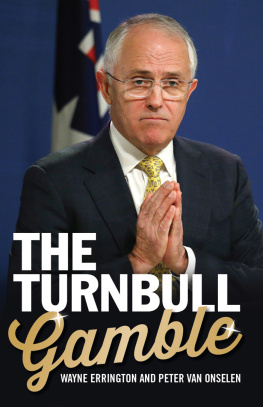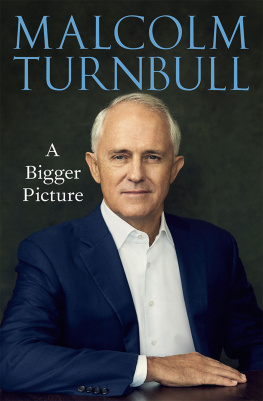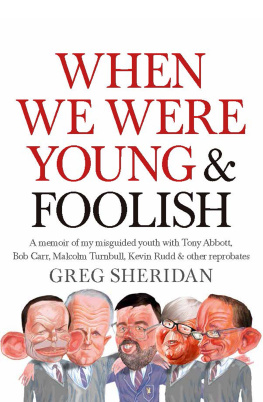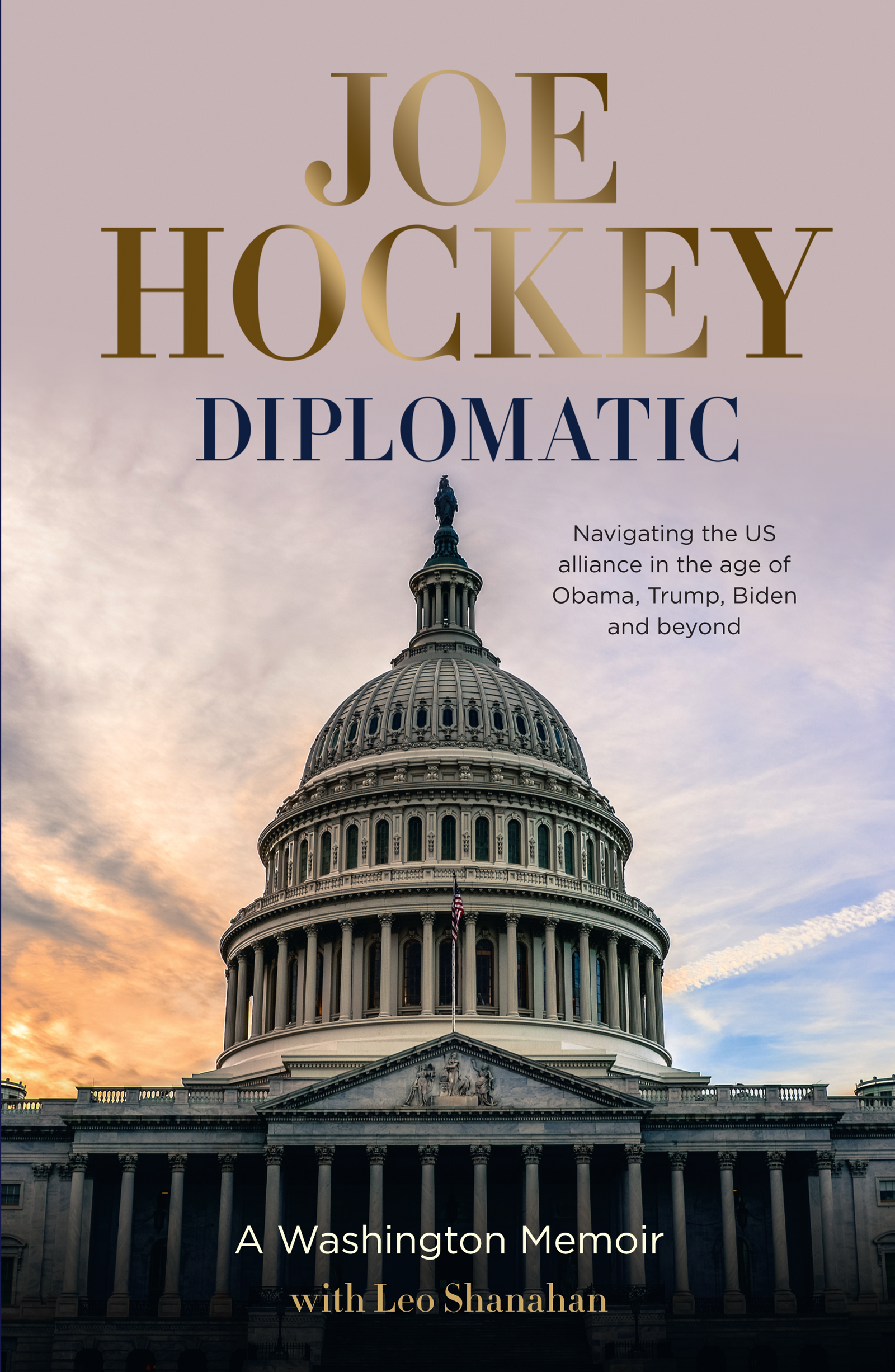Contents
Guide
We engage in public life to make our community better, safer and more prosperous. Our family are conscripts to this cause, not volunteers like us.
This book is dedicated to my wife, Melissa, and our children, Xavier, Adelaide and Ignatius. It would never have happened without them.
To my extended family, friends, fellow Australians and fellow Americans, this is also for you.
Landing in America and the evolution of the AustraliaUnited States relationship
The first time I flew into the United States was aboard Pan Am Airlines. There was some irony about that. It was the end of 1988, and I was completing my article clerkship with an undistinguished London law firm. They were ambulance chasers: they loved litigation, and played tough against big corporations. They were suing Pan Am over the recent Lockerbie disaster, and were sending me to Washington, DC for the case. But they wanted me to take the cheapest flight. So there I was, arriving in the United States on Pan Am, with the task of serving papers on Pan Am.
Donald Trump would soon purchase a failing airline called the Eastern Air Lines Shuttle. As with everything else in his life, he would rebrand it in his unique way: with gold, gaud and glitz. While I missed my chance to fly the Trump Shuttle, as he soon rebranded it, his name conjured up all the unique imagery of the 1980s.
I landed in New York and then flew to Washington, DC a few days later. It wasnt my first trip to the USA but it was my first visit to the East Coast. And having grown up in Sydney on a healthy diet of Americana that stretched from Disney to McDonalds, I felt somewhat at home.
Australia in the 1970s had embraced all things American. In a short time, the speed and excitement of Uncle Sam, from television and food to music and toys, became all-pervasive. America was what Australia would look like in ten years time. Some of it we loved, like disco music and fast food. Some of it was amusing, like bringing an American NFL footballer over to play Rugby League. Sadly, Manfred Moore wasnt the next big thing; indeed, these days we send Rugby League players to the NFL with an equal rate of success.
Some of what we imported from America was just scary. The United States seemed to be the world headquarters for gun-related crime. The Dirty Harry movies and a feast of shows like Adam-12, Starsky and Hutch, Kojak and The Streets of San Francisco told us that the United States was a rough place. It seemed that the biggest security threat to America was American citizens.
On my first night in New York, my suspicions were confirmed. After the arduous trans-Atlantic flight, I found myself in midtown and wandered into a pizzeria for a piece of pie. While I waited for my slice, a guy walked in wearing a hoodie and carrying a black Adidas sports bag. Completely unprovoked, the shop owner jumped over the register and, in a singular, speedy manoeuvre, grabbed the guy by the throat and pinned him against the wall. Think youre going to rob my shop? he screamed into the strangers terrified face. He took the black bag off the would-be customer and ripped it open only to reveal gym clothes. Unperturbed, the proprietor tossed the bag and the innocent man out onto the sidewalk, warning him never to return.
I stood there, stunned. Id been to some tough towns over the years, including a mid-war Beirut, but Id never seen a respectable-looking guy threatened and thrown out of a shop for carrying a gym bag. Perhaps America really needed vigilantes like Batman and Superman to keep the pizza shops safe.
* * *
That America is different from Australia is self-evident. But such is the depth of the relationship and cultural similarities between the two countries, Australians can be lulled into thinking were more or less the same.
Unlike Australia, though, the modern United States was born of two wars: the War of Independence and the Civil War. And that has made America fundamentally different from us. States rights, gun control, race relations and the whole notion of American freedom and nationhood should be understood through the prism of the bloody wars Americans have fought with each other over these issues.
The War of Independence was initially fought over tax. A surprisingly large number of Americans supported Britains running (read: taxing and controlling) the unruly New World colony. According to the prominent historian Robert Calhoon, up to one in five Americans were loyal to Mother England. It wasnt a simple matter.
Australia, by contrast, won its independence by coming of age. The British decided they should handle us like an unruly teenager. Given that the white settlers of Australia were convicts, and that we lived a long way away, independence by mutual agreement was acceptable to both sides.
The impact of the next great battle of US history is far more complex. More Americans died in the Civil War than in every other modern war combined. More than 500,000 Americans were killed, from a population the size of modern-day Australias. It was a brutal war fought over economics and slavery. There remain today many demons in the American psyche, which are reflected in the ongoing tense race relations. They have found expression in the decapitation of Confederate statues, in the history wars and in the widening gap between rich and poor.
Despite these inherent differences between the United States and Australia, the two nations have a long and friendly history. Its a bit like a successful marriage: we like each other a lot, we are not identical and do not always agree; however, we have shared our lives over many years. We are loyal to each other and we really enjoy each others company.
During our 100 Years of Mateship a phrase I coined as ambassador soldiers from the United States and Australia have fought and died together in every major war since World War I. The Battle of Hamel in 1918 was the first time many US soldiers saw combat on the Western Front. They did so alongside Australian soldiers, and under the command of the great Australian military leader General Sir John Monash.
The strength of the relationship was solidified in World War II, and especially by the Allied victory in the Battle of the Coral Sea. There the combined American and Australian naval force stopped a potential Japanese occupation of Port Moresby, at the expense of many young American lives. The threat to Australia during World War II also inspired Prime Minister John Curtins famous foreign policy pivot away from Britain and towards the United States.
However, Australia was never going to understand America fully until we unleashed ourselves from Britain, because we still tended to look at the United States through British eyes. Even after the USA was hugely instrumental in helping save Australia during World War II, Britain maintained its political and cultural dominance. Despite Curtins declaration in late 1941 that Australia looks to America, this was not the point at which the relationship between Australia and the United States was recast. While Curtins statement was a major step, the tipping point was Vietnam.
It was in Vietnam in 1962 that Australia stood with the United States in a pivotal Cold War conflict and the United Kingdom wasnt there. It was the first time wed gone into a war without British involvement. The famous 1966 declaration with which Prime Minister Harold Holt showed Australias support for President Lyndon B. Johnson All the way with LBJ was not well received among left-wingers and Empire conservatives, but it was a foreign policy statement that redefined Australias outlook for the second half of the twentieth century.
Next page
